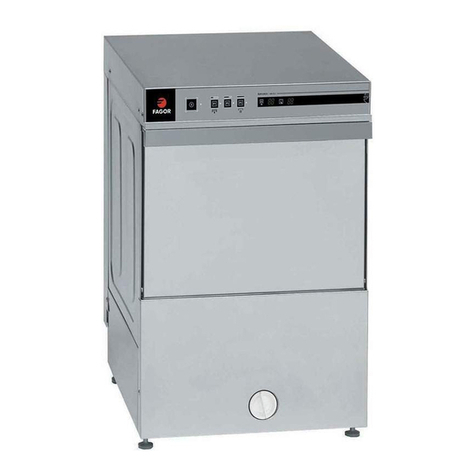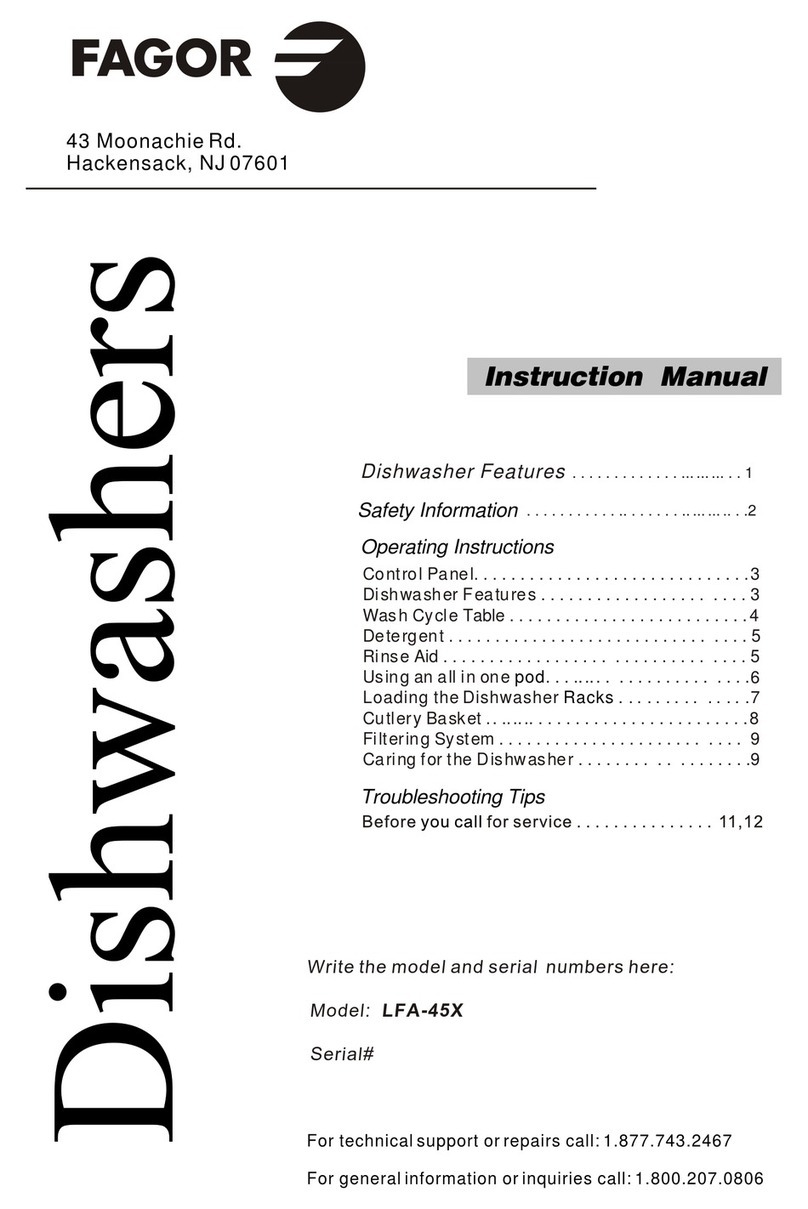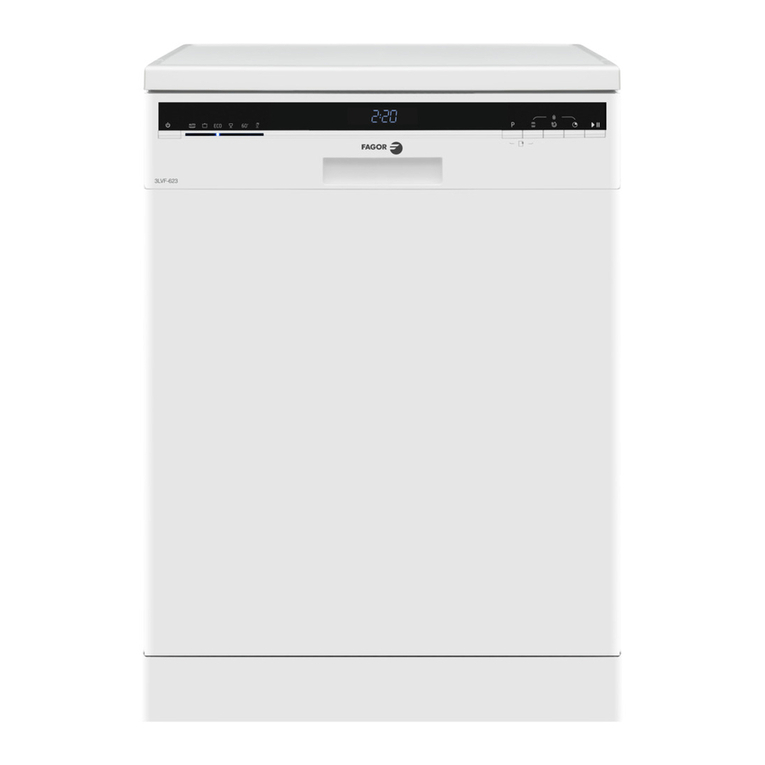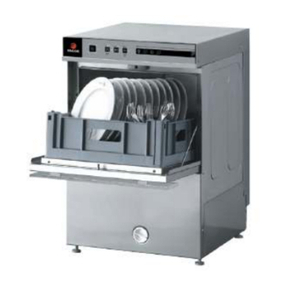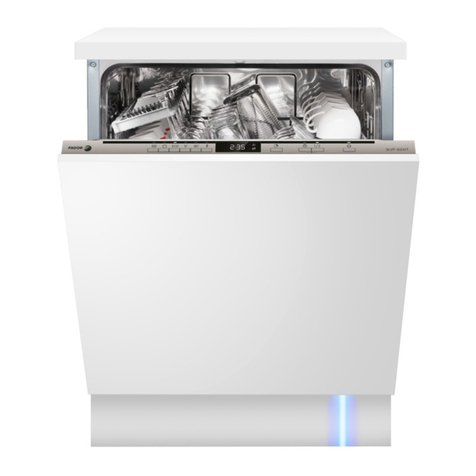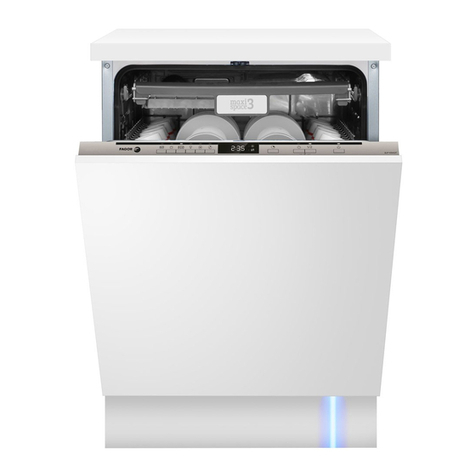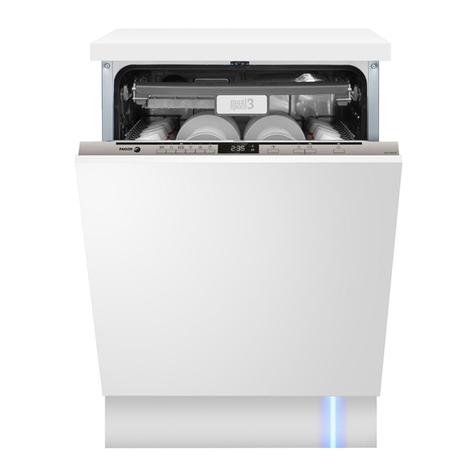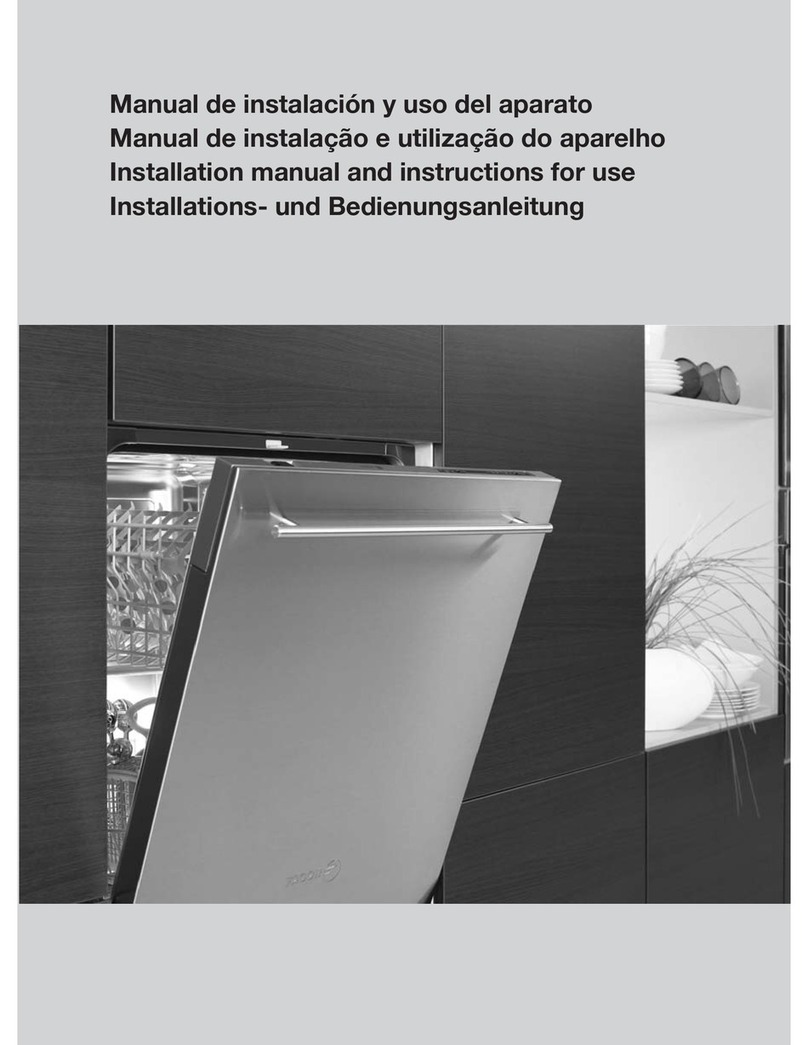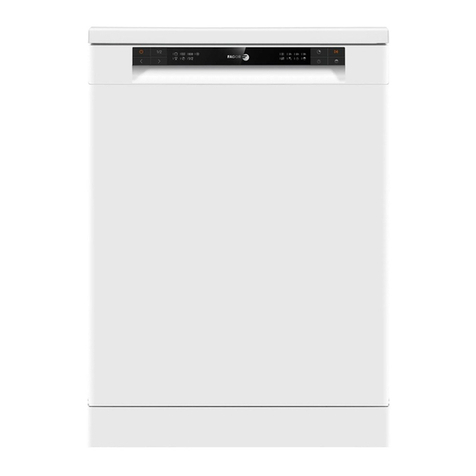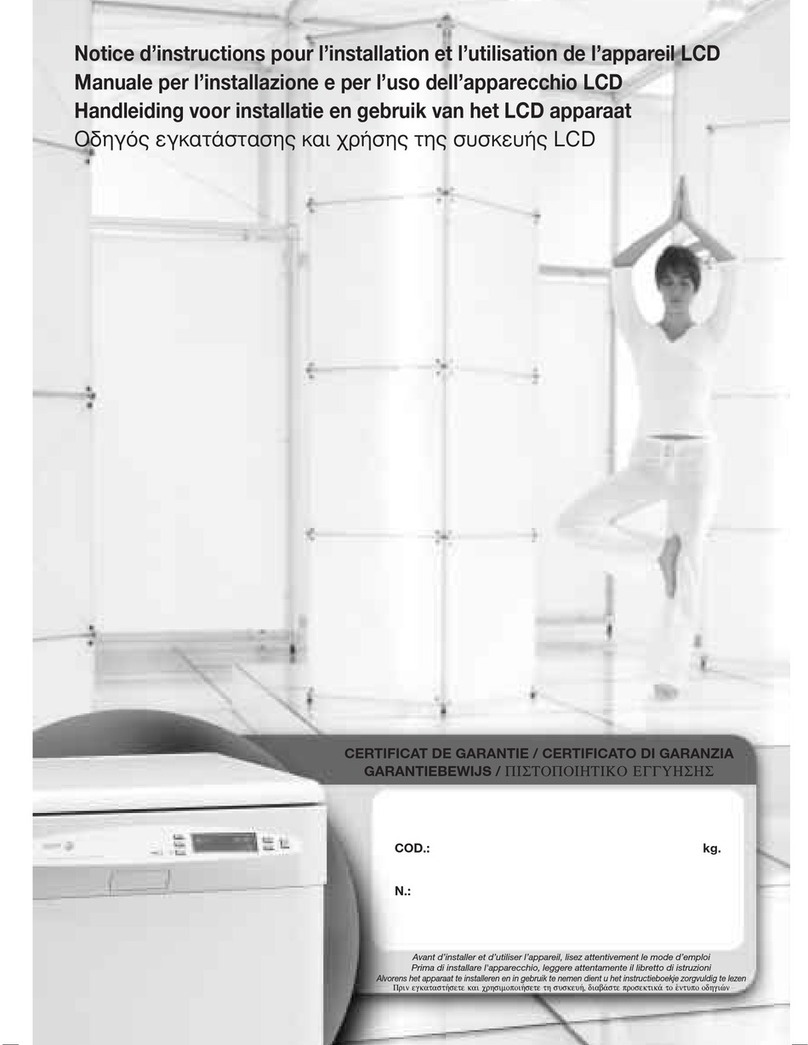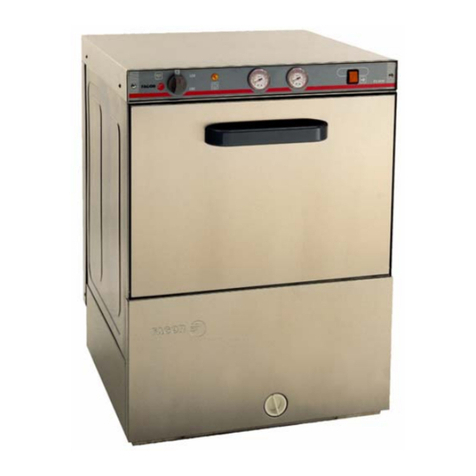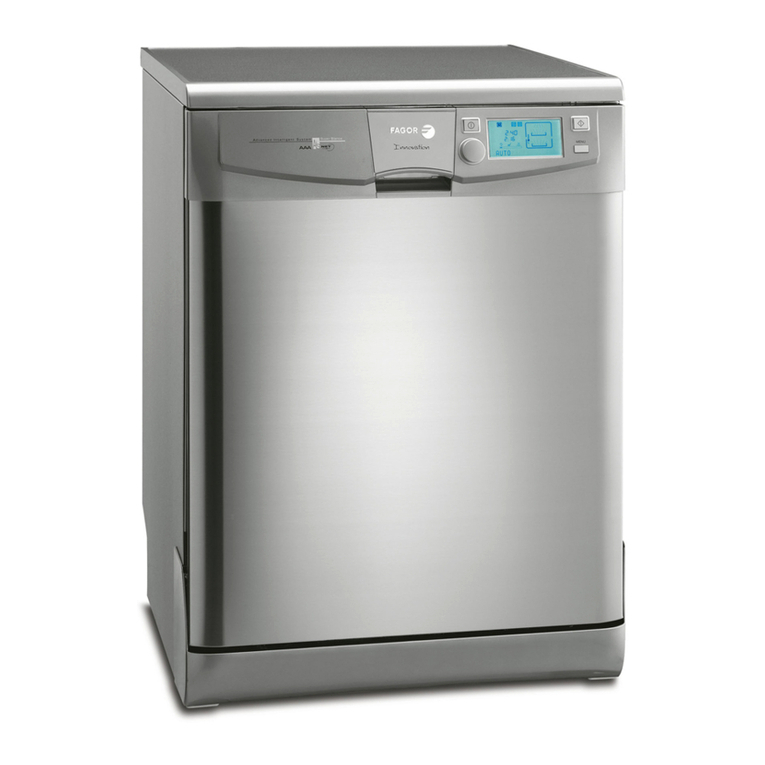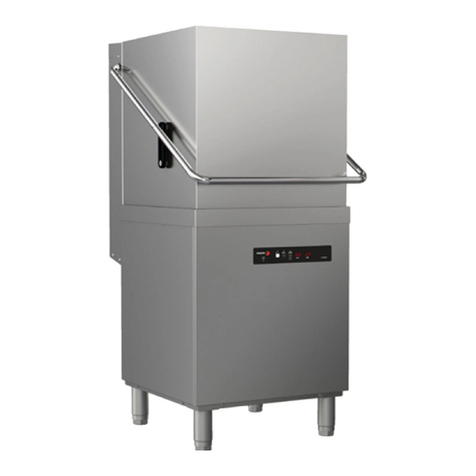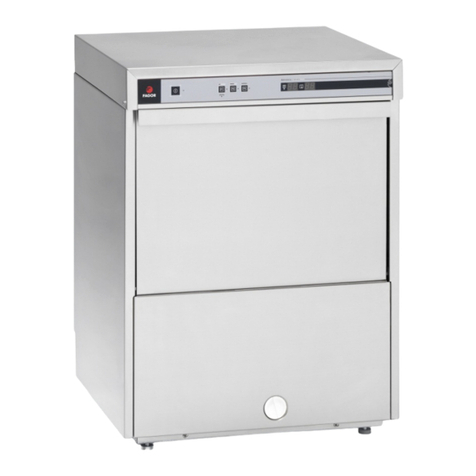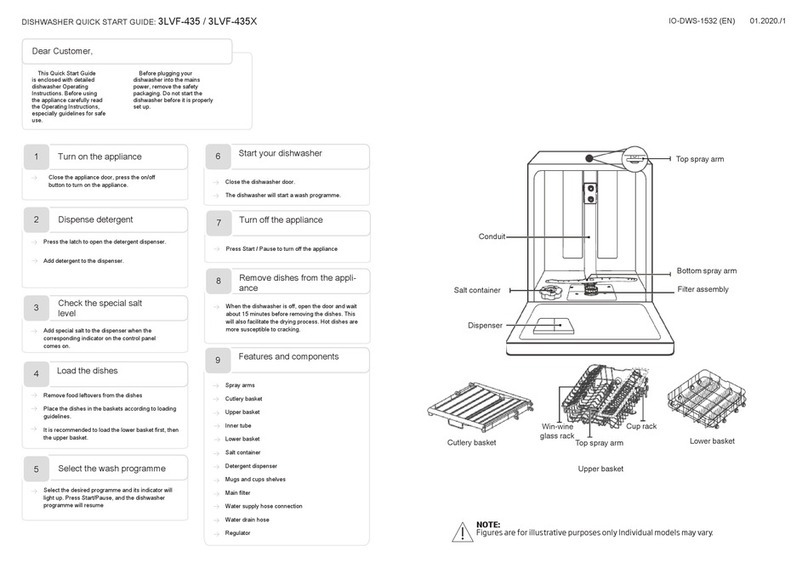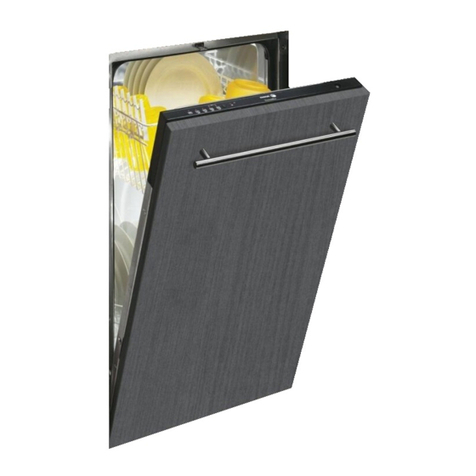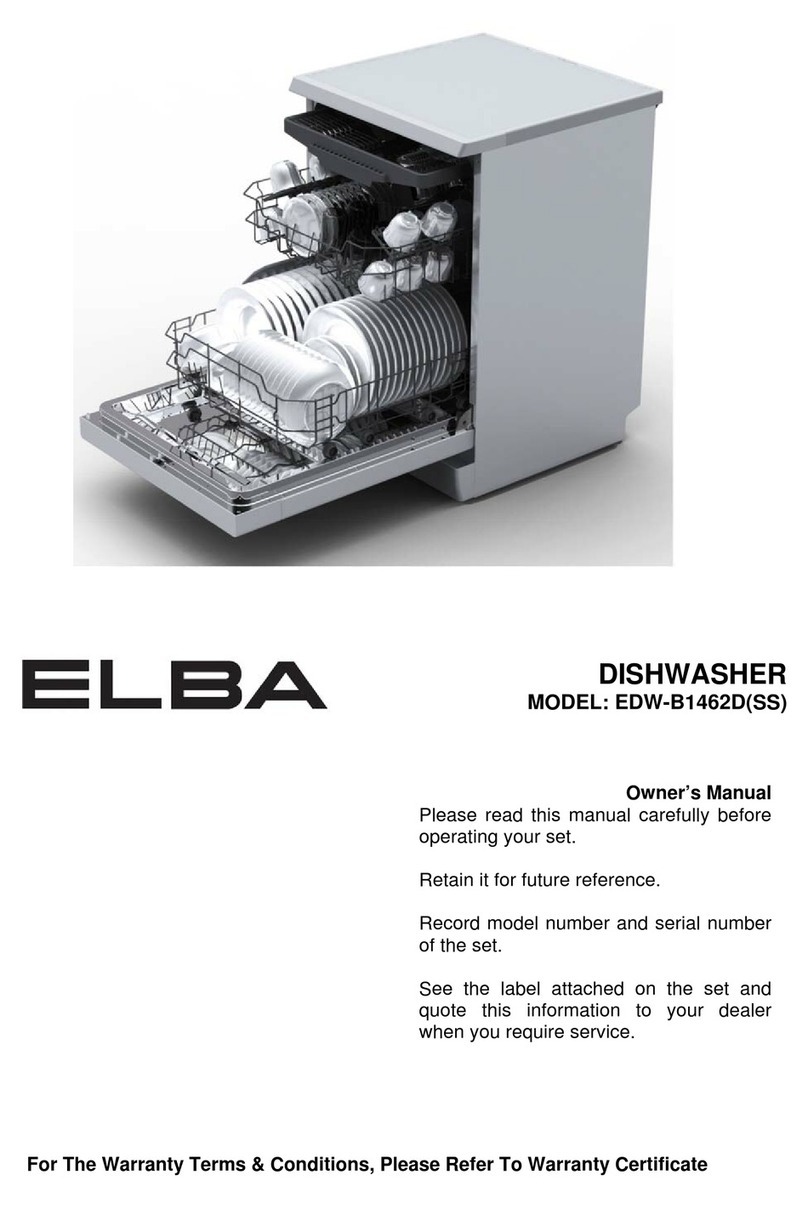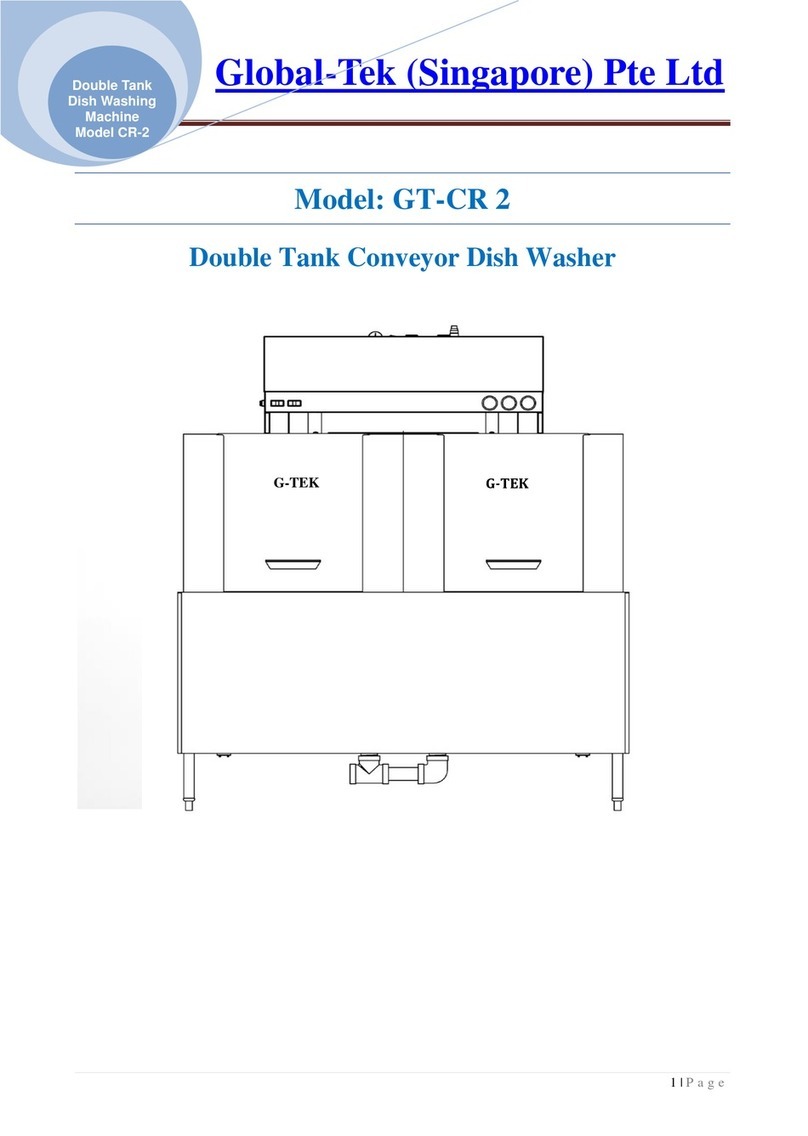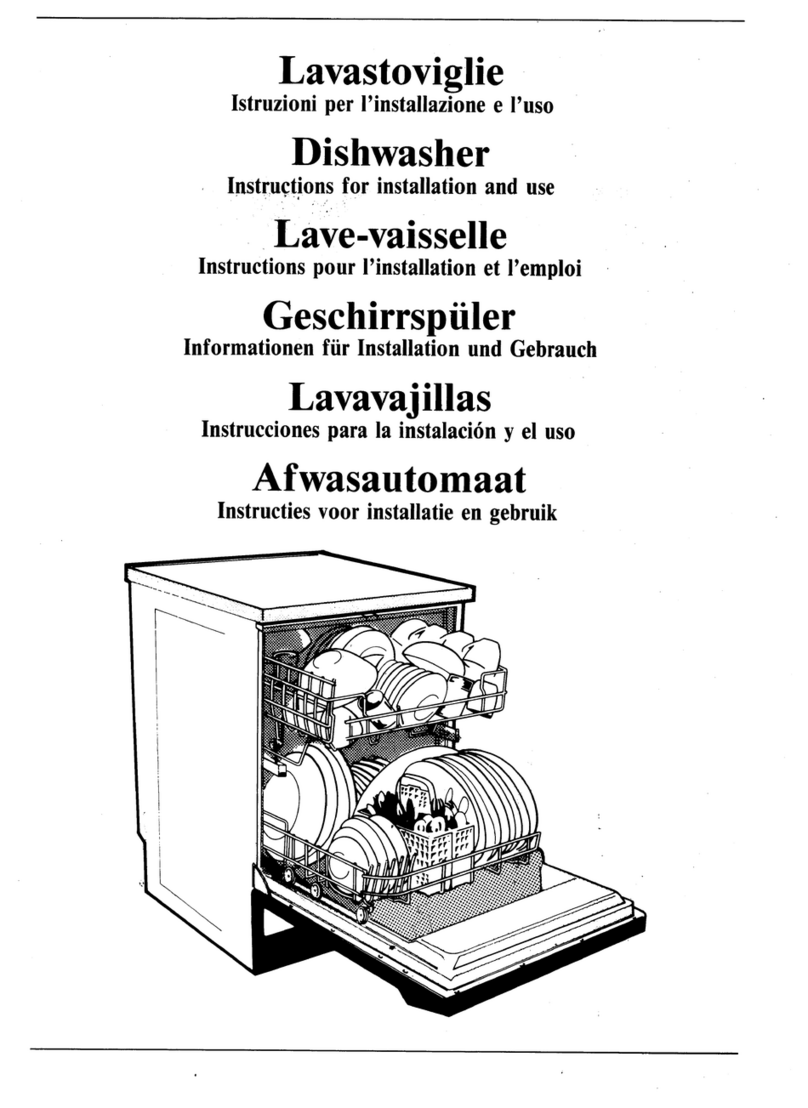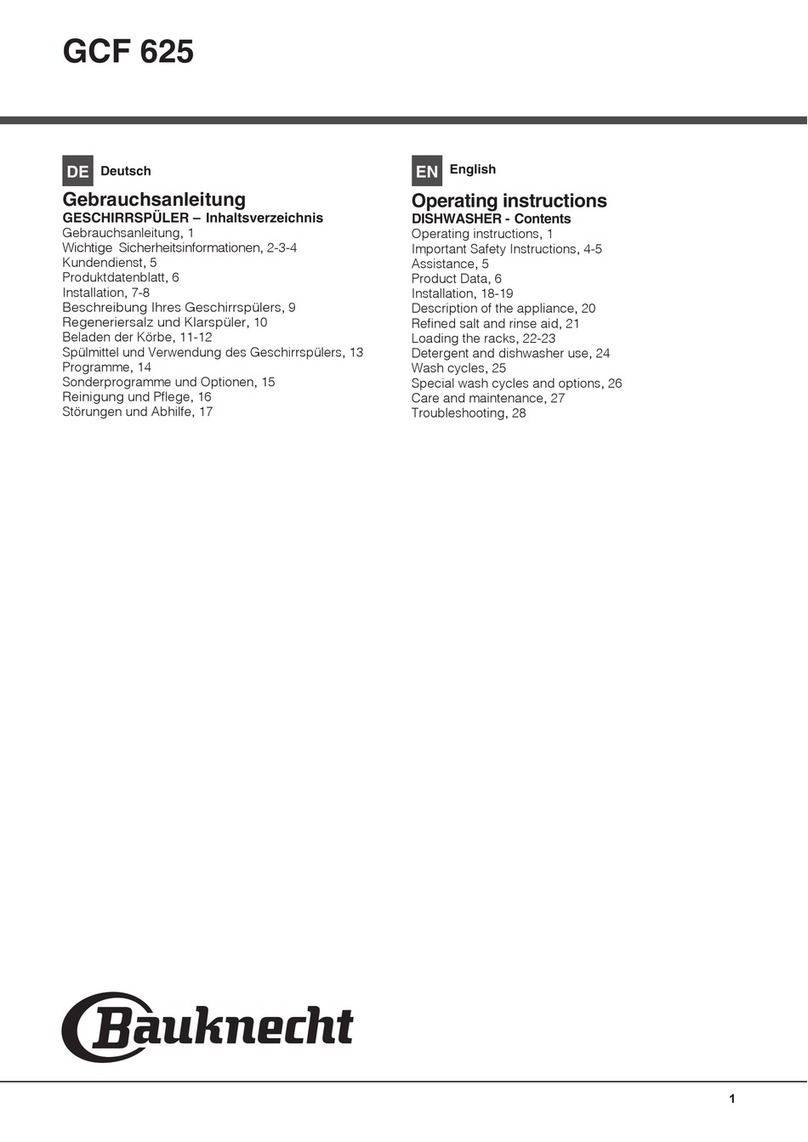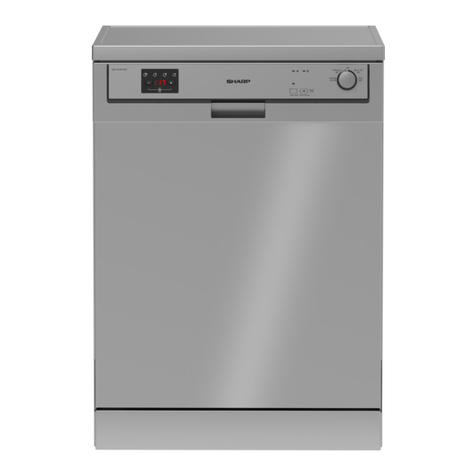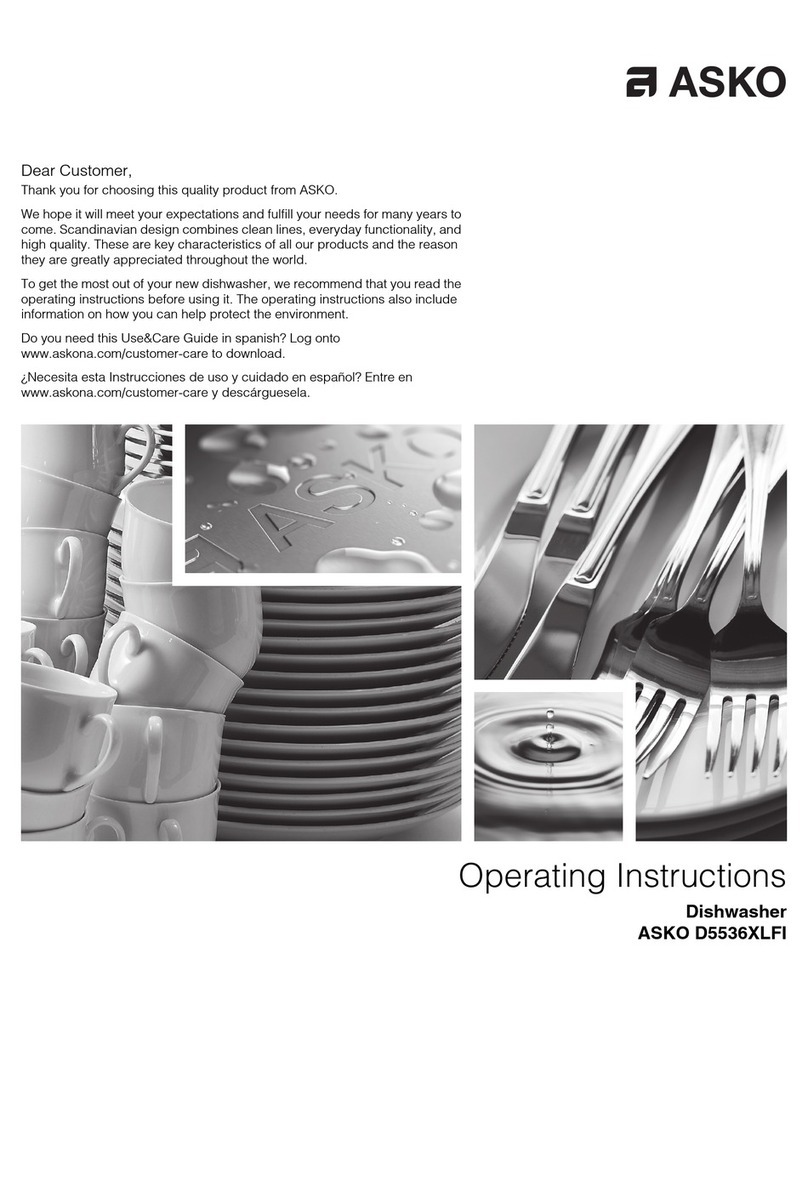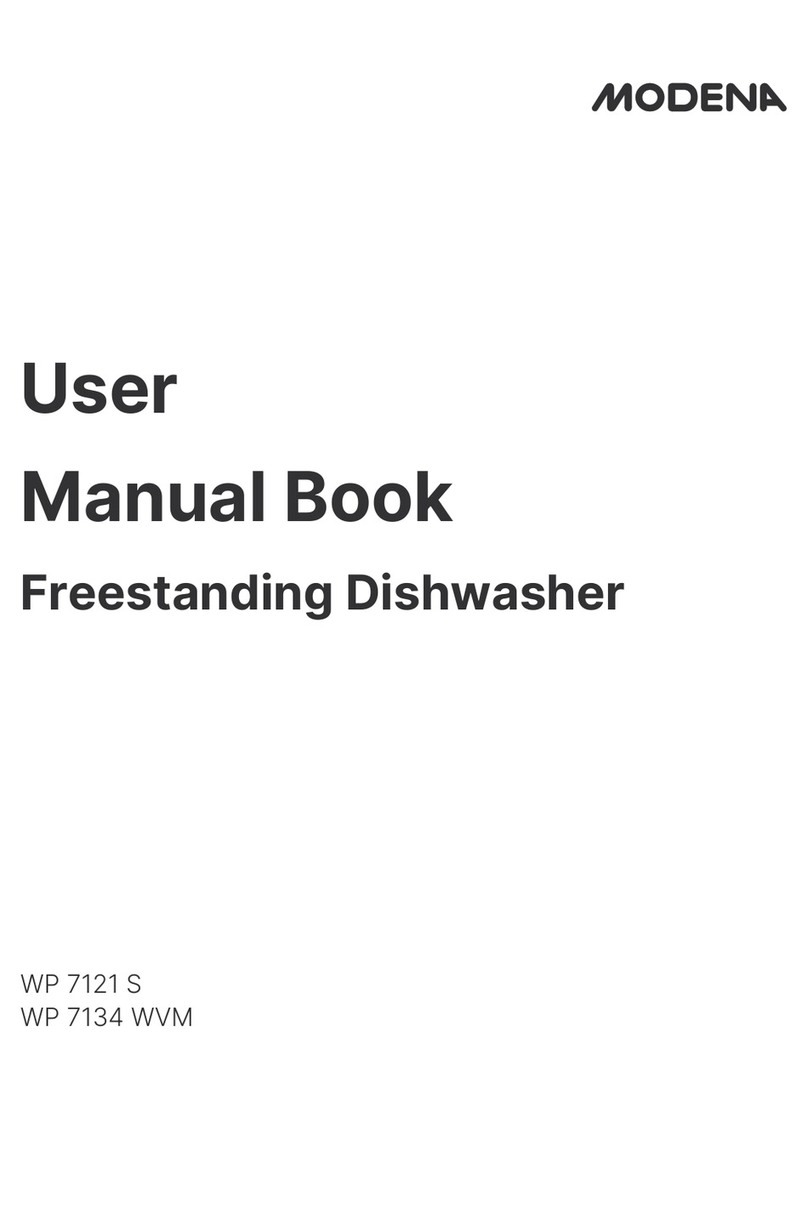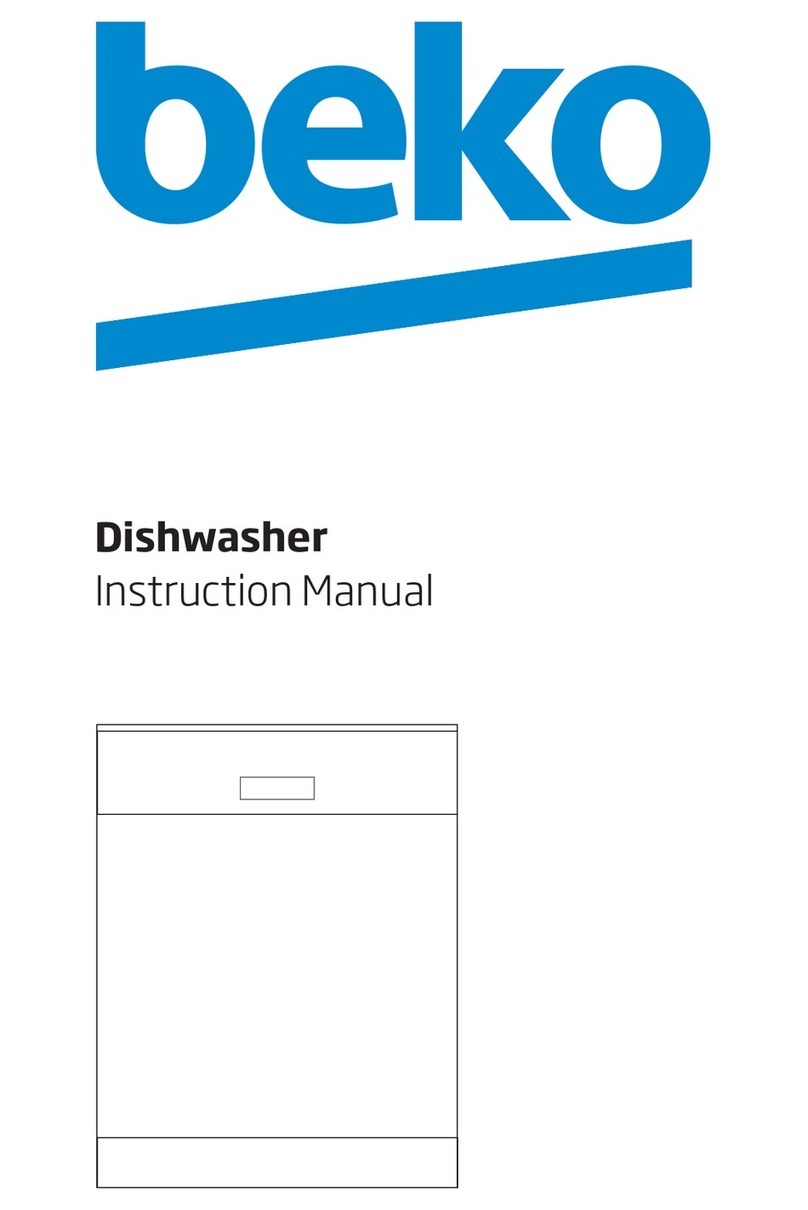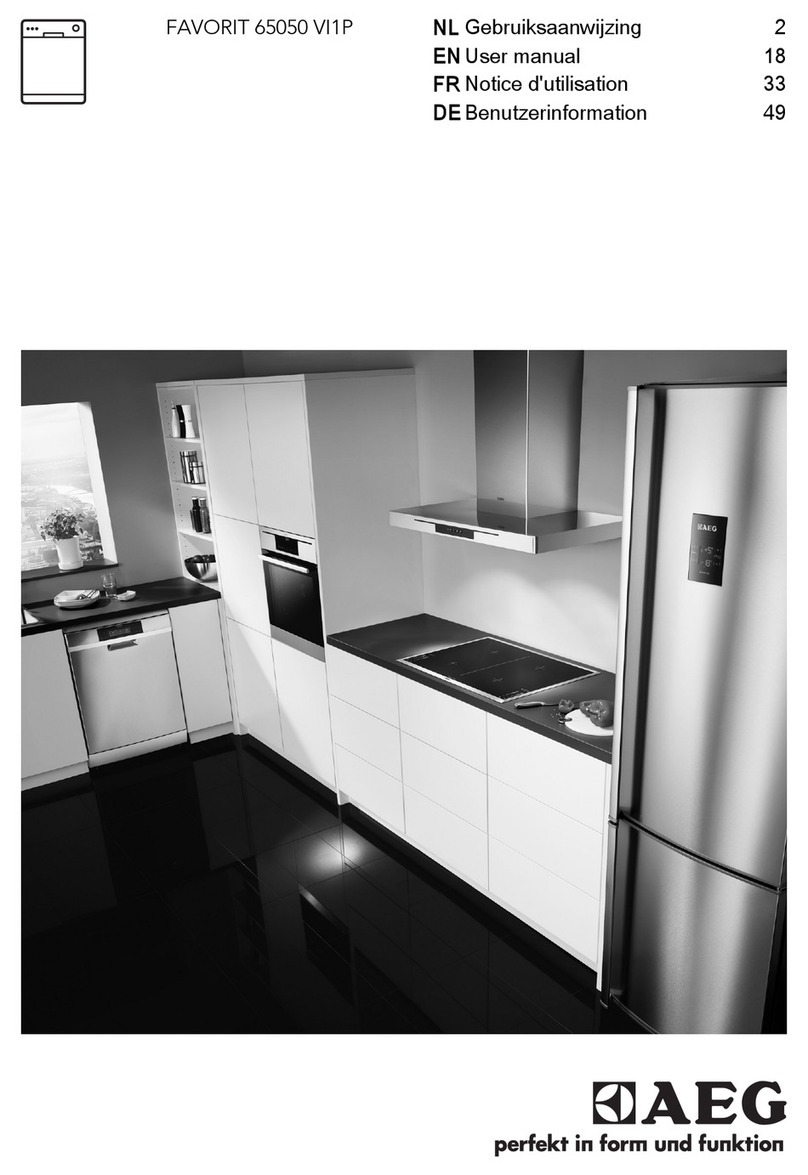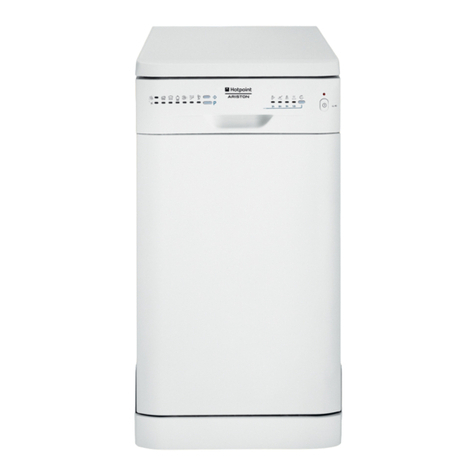2
This appliance must be grounded. In the event
of a malfunction or breakdown, grounding will
reduce the risk of electric shock by providing a
path of less resistance
This appliance is equippedwithan
equipment-grounding conductor and a grounding
plug. The plug must be plugged into an appropriate
outlet that is installed and grounded in accordance
with all local codes and ordinances.
to the electrical currents.
Improper connection of the equipment-
grounding conductor can result in a risk
of electric shock. Check with a qualified
electrician or service representative
the appliance is properly grounded.
Do not modify the plug provided with the
appliance.
to ensure
that
If the plug does not fit the outlet,
contact a qualified electrician to install a proper
outlet.
Keep child away from
child away from the open door of the dishwasher,
there could still be some detergent left inside.
detergents and rinse aids. Keep
Do not abuse, sit on, or stand on the door or dish
rack of the dishwasher.
Do not touch the heating element during or
immediately after use.
Do not wash plastic items unless they are marked
dishwasher safe. For plastic
check the manufactur recommendations.
items not marked,
er's
Use onlydetergent and rinse additives designed
for an automatic dishwasher. Never use soap,
laundry detergent orhand washing detergent
in your dishwasher. Keepthese products out of
reach of children.
During installation, the powersupply must not
beexcessivelyor dangerously bentorflattened.
Thedoor shouldnot be left in the open position
since this could present a tripping hazard.
Do not tamper with internal controls.
Do not operate your dishwasher unless all
enclosure panels are properly in place. Open the
door very carefully if the dishwasher is operating,
there is a risk of water squirting out.
Do not place any heavy objects or stand on the door
when it is open as this could damage the door and
cause the appliance to tip forward.
When loading items to be washed:
1) Locate sharp items so that they are not likely to
damage the doorseal.
2) Load sharp knives with the handles up to reduce
the risk of injuries.
When using your dishwasher, heatingelement.
make sure no plastic
items come in contact with the
If the cord is damaged, it must be
replaced by serviceagentor asimilarly
qualified person.
powersupply
a qualified
Pleasedispose ofpackingmaterials properly.
Use the dishwasher only for its intended function.
When disposing of an old dishwasher, be sure to
remove the door before discarding.
Theapplianceis not intended foruseby young
children orinfirm persons without supervision.
Dishwasher detergents are strongly alkaline,they
can be extremely dangerous if swallowed.Avoid
contact with skin and eyes and keep children away
from the dishwasher when the door is open.
Be sure to keep children away from the dishwasher.
Check that the detergent receptable is empty after
completion of the wash cycle.
